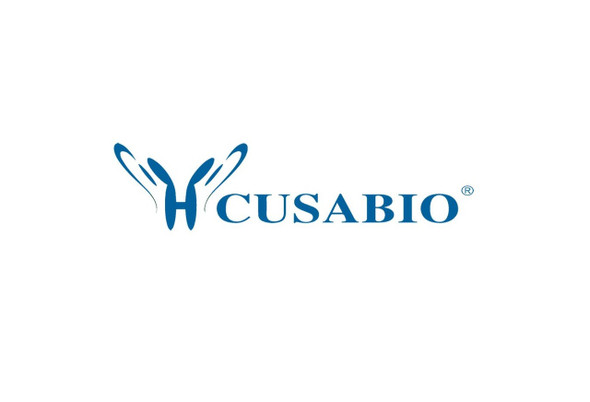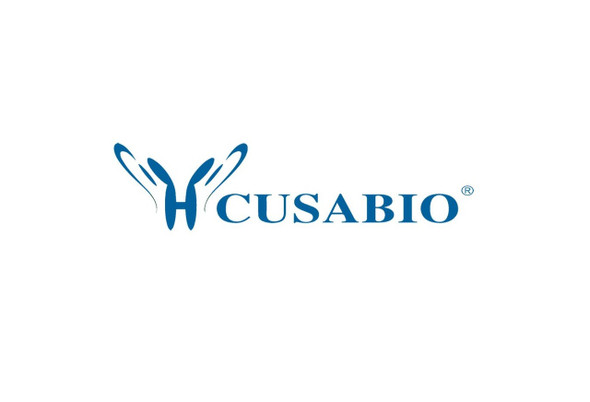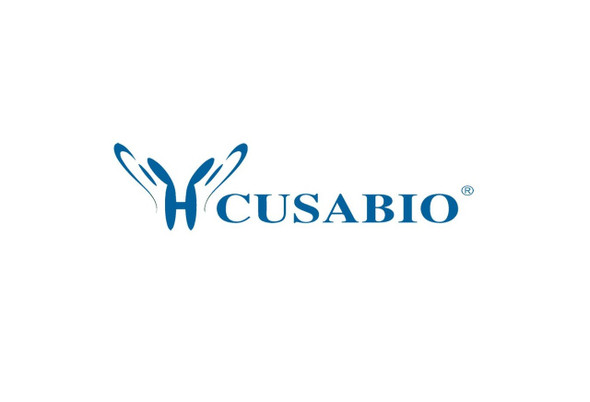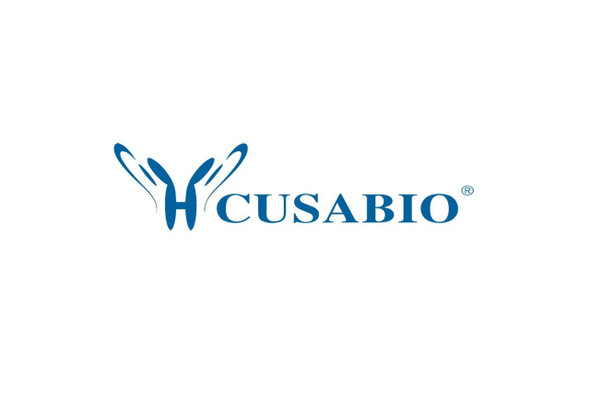Cusabio Human Recombinants
Recombinant Human Perforin-1 (PRF1) | CSB-EP018668HU
- SKU:
- CSB-EP018668HU
- Availability:
- 3 - 7 Working Days
Description
Recombinant Human Perforin-1 (PRF1) | CSB-EP018668HU | Cusabio
Alternative Name(s): Cytolysin;Lymphocyte pore-forming protein ;PFP
Gene Names: PRF1
Research Areas: Immunology
Organism: Homo sapiens (Human)
AA Sequence: PCHTAARSECKRSHKFVPGAWLAGEGVDVTSLRRSGSFPVDTQRFLRPDGTCTLCENALQEGTLQRLPLALTNWRAQGSGCQRHVTRAKVSSTEAVARDAARSIRNDWKVGLDVTPKPTSNVHVSVAGSHSQAANFAAQKTHQDQYSFSTDTVECRFYSFHVVHTPPLHPDFKRALGDLPHHFNASTQPAYLRLISNYGTHFIRAVELGGRISALTALRTCELALEGLTDNEVEDCLTVEAQVNIGIHGSISAEAKACEEKKKKHKMTASFHQTYRERHSEVVGGHHTSINDLLFGIQAGPEQYSAWVNSLPGSPGLVDYTLEPLHVLLDSQDPRREALRRALSQYLTDRARWRDCSRPCPPGRQKSPRDPCQCVCHGSAVTTQDCCPRQRGLAQLEVTFIQAWGLWGDWFTATDAYVKLFFGGQELRTSTVWDNNNPIWSVRLDFGDVLLATGGPLRLQVWDQDSGRDDDLLGTCDQAPKSGSHEVRCNLNHGHLKFRYHARCLPHLGGGTCLDYVPQMLLGEPPGNRSGAVW
Source: E.coli
Tag Info: N-terminal 6xHis-SUMO-tagged
Expression Region: 22-555aa
Sequence Info: Full Length of Mature Protein
MW: 75.2 kDa
Purity: Greater than 90% as determined by SDS-PAGE.
Relevance: Plays a key role in secretory granule-dependent cell death, and in defense against virus-infected or neoplastic cells. Plays an important role in killing other cells that are recognized as non-self by the immune syst, e.g. in transplant rejection or some forms of autoimmune disease. Can insert into the mbrane of target cells in its calcium-bound form, oligomerize and form large pores. Promotes cytolysis and apoptosis of target cells by facilitating the uptake of cytotoxic granzymes.
Reference: The DNA sequence and comparative analysis of human chromosome 10.Deloukas P., Earthrowl M.E., Grafham D.V., Rubenfield M., French L., Steward C.A., Sims S.K., Jones M.C., Searle S., Scott C., Howe K., Hunt S.E., Andrews T.D., Gilbert J.G.R., Swarbreck D., Ashurst J.L., Taylor A., Battles J. , Bird C.P., Ainscough R., Almeida J.P., Ashwell R.I.S., Ambrose K.D., Babbage A.K., Bagguley C.L., Bailey J., Banerjee R., Bates K., Beasley H., Bray-Allen S., Brown A.J., Brown J.Y., Burford D.C., Burrill W., Burton J., Cahill P., Camire D., Carter N.P., Chapman J.C., Clark S.Y., Clarke G., Clee C.M., Clegg S., Corby N., Coulson A., Dhami P., Dutta I., Dunn M., Faulkner L., Frankish A., Frankland J.A., Garner P., Garnett J., Gribble S., Griffiths C., Grocock R., Gustafson E., Hammond S., Harley J.L., Hart E., Heath P.D., Ho T.P., Hopkins B., Horne J., Howden P.J., Huckle E., Hynds C., Johnson C., Johnson D., Kana A., Kay M., Kimberley A.M., Kershaw J.K., Kokkinaki M., Laird G.K., Lawlor S., Lee H.M., Leongamornlert D.A., Laird G., Lloyd C., Lloyd D.M., Loveland J., Lovell J., McLaren S., McLay K.E., McMurray A., Mashreghi-Mohammadi M., Matthews L., Milne S., Nickerson T., Nguyen M., Overton-Larty E., Palmer S.A., Pearce A.V., Peck A.I., Pelan S., Phillimore B., Porter K., Rice C.M., Rogosin A., Ross M.T., Sarafidou T., Sehra H.K., Shownkeen R., Skuce C.D., Smith M., Standring L., Sycamore N., Tester J., Thorpe A., Torcasso W., Tracey A., Tromans A., Tsolas J., Wall M., Walsh J., Wang H., Weinstock K., West A.P., Willey D.L., Whitehead S.L., Wilming L., Wray P.W., Young L., Chen Y., Lovering R.C., Moschonas N.K., Siebert R., Fechtel K., Bentley D., Durbin R.M., Hubbard T., Doucette-Stamm L., Beck S., Smith D.R., Rogers J.Nature 429:375-381(2004)
Storage: The shelf life is related to many factors, storage state, buffer ingredients, storage temperature and the stability of the protein itself. Generally, the shelf life of liquid form is 6 months at -20?/-80?. The shelf life of lyophilized form is 12 months at -20?/-80?.
Notes: Repeated freezing and thawing is not recommended. Store working aliquots at 4? for up to one week.
Function: Plays a key role in secretory granule-dependent cell death, and in defense against virus-infected or neoplastic cells. Plays an important role in killing other cells that are recognized as non-self by the immune system, e.g. in transplant rejection or some forms of autoimmune disease. Can insert into the membrane of target cells in its calcium-bound form, oligomerize and form large pores. Promotes cytolysis and apoptosis of target cells by facilitating the uptake of cytotoxic granzymes.
Involvement in disease: Familial hemophagocytic lymphohistiocytosis 2 (FHL2)
Subcellular Location: Cytoplasmic granule lumen, Secreted, Cell membrane, Multi-pass membrane protein, Endosome lumen
Protein Families: Complement C6/C7/C8/C9 family
Tissue Specificity:
Paythway: Apoptosis
Form: Liquid or Lyophilized powder
Buffer: If the delivery form is liquid, the default storage buffer is Tris/PBS-based buffer, 5%-50% glycerol. If the delivery form is lyophilized powder, the buffer before lyophilization is Tris/PBS-based buffer, 6% Trehalose, pH 8.0.
Reconstitution: We recommend that this vial be briefly centrifuged prior to opening to bring the contents to the bottom. Please reconstitute protein in deionized sterile water to a concentration of 0.1-1.0 mg/mL.We recommend to add 5-50% of glycerol (final concentration) and aliquot for long-term storage at -20?/-80?. Our default final concentration of glycerol is 50%. Customers could use it as reference.
Uniprot ID: P14222
HGNC Database Link: HGNC
UniGene Database Link: UniGene
KEGG Database Link: KEGG
STRING Database Link: STRING
OMIM Database Link: OMIM









